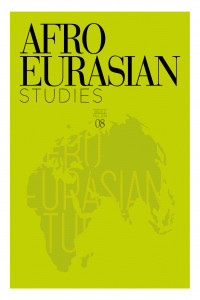Islamic Microfinance as an Alternative for Poverty Alleviation: A Survey
Islamic Microfinance as an Alternative for Poverty Alleviation: A Survey
The purpose of this paper is to demonstrate the potential of Islamic Microfinance as an alternative tool for poverty alleviation. While poverty is a common problem faced by all countries, the efforts and actions has not reached the purpose yet. Still, it calls more attention from majority of government and development oriented organization to alleviate it in an effective and comprehensive approach. In Islamic perspective, poverty is not just viewed from material aspect but also moral/spiritual, thus, any poverty alleviation strategy should reflect on both aspects. It might be argued that while conventional approach on poverty left the importance of committing to moral/spiritual, Islamic approach has more attention on that aspect.Islamic microfinance, having a unique feature compare to the conventional counterpart, offers a potential solution to poverty alleviation. The underlying principle of Islamic microfinance is the application of Islamic values to promote social justice for all and to achieve economic development with building human capability as center of attention. Hence, the content of moral and value aspect, emphasizes on the human side and communities responsibility, is likely to be more effective and comprehensive in poverty alleviation
Keywords:
Islamic, microfinance, shari’ah poverty alleviation,
___
- Ahmed, H., 2002. Financing Microenterprises: An Analytical Study of Islamic Microfinance Institutions. Islamic Economic Studies, 9(2), pp. 27-64.
- Ahmed, H., 2004. Role of Zakah and Awqaf in Poverty Alleviation. Jeddah: Islamic Research and Training Insitute, Islamic Development Bank.
- Ahmed, H., 2012. Organizational Model of Islamic Microfinance. In: N. Ali, ed., Shari’a Compliant Microfinance. New York: Routledge. pp. 17-32.
- Armendariz, B. and Morduch, J., 2010. The Economics of Microfinance, Second Edition. Cambridge, MA: The MIT Press.
- Ascarya and Sanrego, Yulizar D., 2007. Redefine Micro, Small, and Medium Enterprises Classification and The Potency of Baitul Maal Wa Tamwiel As Intermediary Insitutions in Indonesia. Paper presented at the First International Conference on Inclusive Islamic Financial Sector Development, IRTI-Islamic Development Bank, University of Bruney Darussalam on 17-19 April 2007, Brunei Darussalam., Brunei Darussalam.
- Asutay, M., 2010. Islamic Microfinance: Fulfilling Social and Developmental Expectation. In: Bloombury Collection, ed., Islamic Finance Institution and Market. London: Bloombury. pp. 25-29.
- Chapra, M. Umer, 1992. Islam and the Economic Challenge. Leicester: Islamic Foundation.
- Chapra, M. Umer, 2008. The Islamic Vision of Development in the Light of Maqasid al- Shari`ah. Surrey: International Institute of Islamic Thought.
- Chapra, M. Umer, 2008b. Ibn Khaldun’s Theory of Development: Does It Help Explain the Low Performance of the Present-Day Muslim World?. The Journal of Socio- Economics, 37, pp. 836–863.
- Chapra, M. U., 2007. Islam and Economic Development : A Strategy for Development with Justice and Stability. New Delhi: Adam Publishers & Distributors.
- Dhumale, R., & Sapcanin, A., 1999. An Application of Islamic Banking Principles to Microfinance. Washington DC: UNDP.
- Dusuki, A. W., 2008. Banking for the Poor: The Role of Islamic Banking in Microfinance Initiatives. Humanomics, 24(1), pp. 9-66.
- Ledgerwood, J., 2000. Sustainable Banking with the Poor, Micro Finance Handbook, An Institutional and Financial Perspective. Washington DC: The World Bank.
- Mannan, M. A., 1986. The Economics of Poverty in Islam with Special Reference to Muslim Countries. In: M. Iqbal, ed., Distributive Justice and Need Fulfilment in an Islamic Economy. Leicester: Islamic Foundation.
- Obaidullah, M., 2008a. Role of Microfinance in Poverty Alleviation. Jeddah: IRTI, Islamic Development Bank.
- Obaidullah, M., 2008b. Introduction to Islamic Microfinance. New Delhi: International Institute of Islamic Business and Finance.
- Obaidullah, M. and Khan, T., 2008c. Islamic Microfinance Development: Challenges and Initiatives. Jeddah: IRTI, Islamic Development Bank.
- Rahman, M. M. and Ahmad, F., 2010. Impact of Microfinance of IBBL on the Rural Poor’s Livelihood in Bangladesh: An Empirical Study. International Journal of Islamic and Middle Eastern Finance and Management, 3(2), pp. 168-190.
- Seibel, H. D., 2005. Islam Microfinance in Indonesia. Cologne: University of Cologne, Development Research Center.
- Shirazi, N. S., 2012. Targeting and Socio-Economic Impact of Microfinance: A Case Study of Pakistan. Islamic Economic Studies, 20(2), pp. 1-28.
- Wilson, R., 2007. Making Development Assistance Sustainable Through Islamic Microfinance. IIUM Journal of Economics and Management, 15(2), pp. 197-217.
- Zarka, M. A., 2012. Leveraging Philanthropy: Monetary Waqf for Microfinance. In N. Ali, ed., Shari’a Compliant Microfinance. London: Routledge. pp. 76-80.
- ISSN: 2147-110X
- Yayın Aralığı: Yıllık
- Başlangıç: 2012
- Yayıncı: Musiad (Independent Industrialists and Businessmen's Association)
Sayıdaki Diğer Makaleler
Islamic Liquidity Management: The Way Forward
Islamic Finance as a Means to Make Istanbul an International Financial Centre
Fatih KANSOY, Hasan Huseyin KARLİOGLU
Is Development Accumulation of Wealth? Islamic Views
Fatih SAVAŞAN, Mehmet SARAÇ, Temel GÜRDAL
Corporate Social Responsibility from an Islamic Moral Economy Perspective: A Literature Survey
Methodological Discussion on the Subject of Islamic Economics
Ali Joma KHAFAFA, Zurina SHAFİİ
Applying Core Principles of Risk Management in Islamic Banks’ Operational Risk Analysis
Hylmun IZHAR, Zakaria Salah Ali HASSAN
